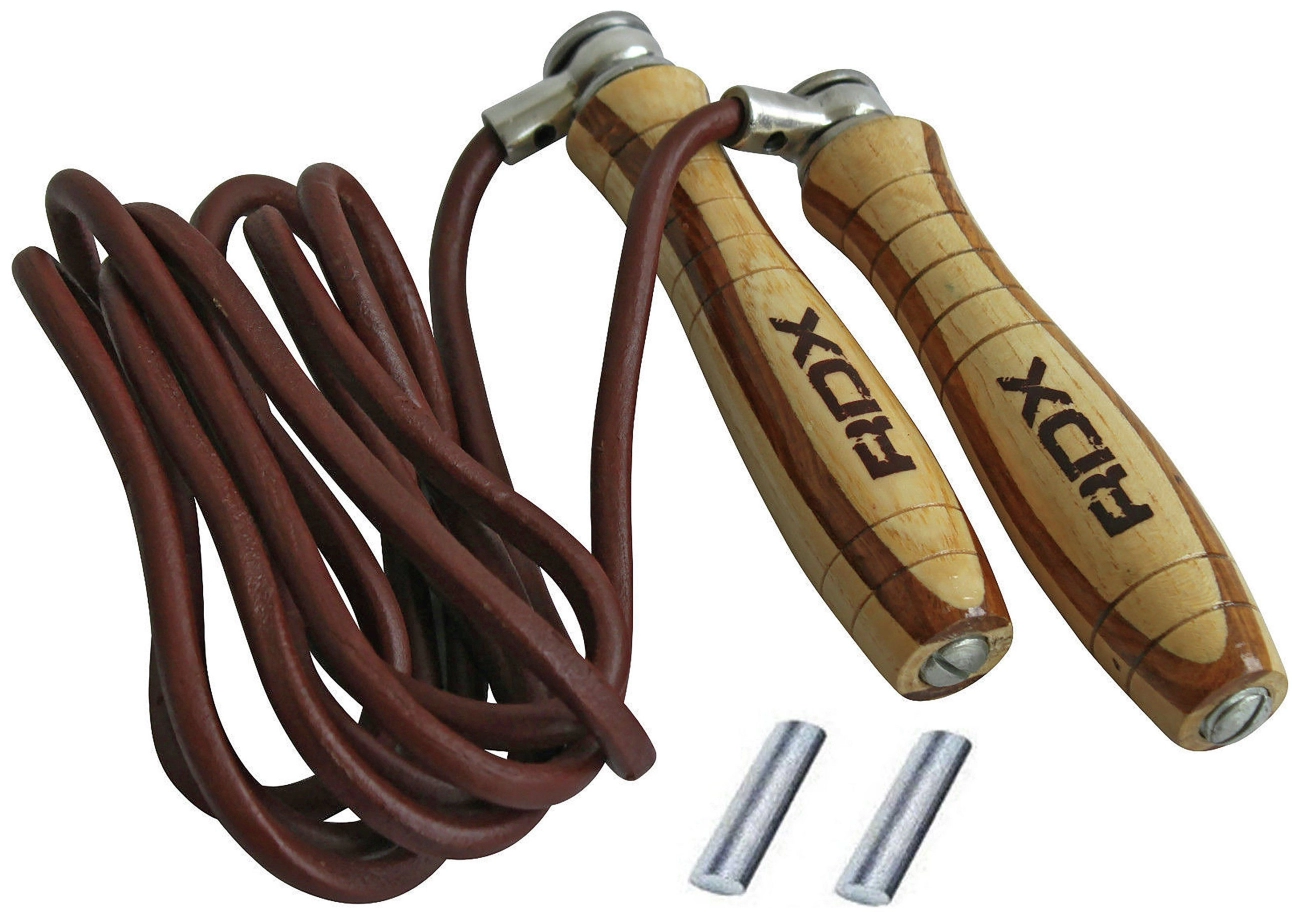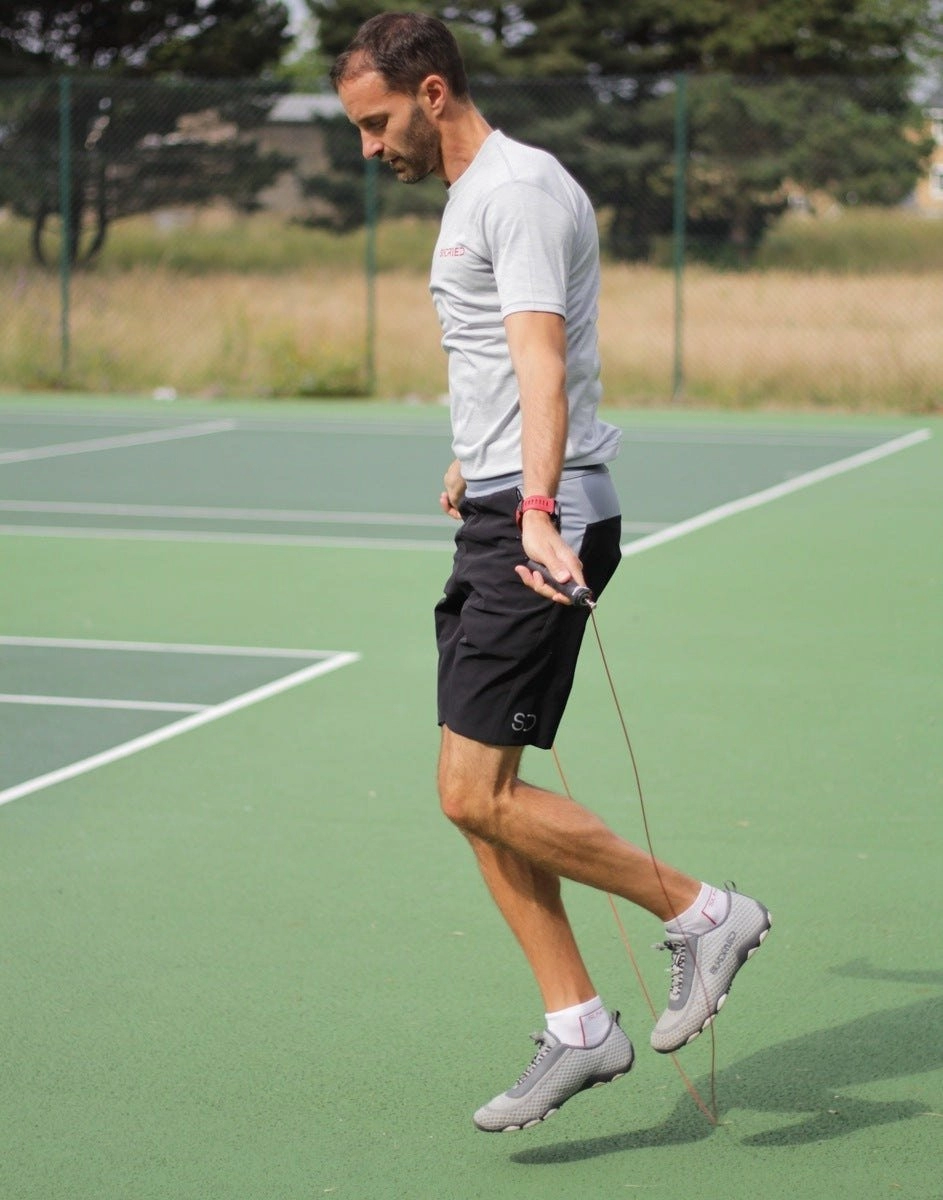Why Skipping Rope is an Effective Full Body Workout
Skipping rope stands out as a highly effective full body workout that combines cardio, strength, and coordination all in one. Whether you want to boost your heart health, build muscle, or shed pounds, a skipping rope workout plan offers multiple benefits that make it a top choice for fitness enthusiasts of all levels.
Cardiovascular Benefits for Heart Health and Endurance
Jump rope training is a powerful cardio workout with jump rope that significantly improves cardiovascular fitness. When you skip rope regularly, your heart rate increases, strengthening your heart muscle and improving blood circulation. This leads to better endurance and stamina, allowing you to exercise longer without fatigue. For anyone looking to enhance heart health, skipping rope provides an efficient and convenient solution.
Strengthens Muscles in Legs Core and Arms
Jump rope is not just about legs; it engages multiple muscle groups throughout the body. The repetitive jumping motion targets the calves, quads, and hamstrings, while your core works to stabilize your body with every bounce. Additionally, your arms and shoulders stay active as you rotate the rope, improving muscle tone and strength. This makes skipping rope a versatile workout that builds muscle endurance and coordination simultaneously.
Enhances Coordination and Agility
One of the unique benefits of skipping rope is how it improves coordination and agility. The need to synchronize footwork with rope rotation challenges your brain and body to work together efficiently. Over time, this helps sharpen reflexes and balance, skills that are valuable for other sports and daily activities. The variety of jump rope exercises, from basic bounce to advanced footwork, keeps your coordination skills progressing.
Burns Calories and Promotes Weight Loss
When it comes to weight loss and calorie burning, skipping rope is one of the most effective exercises you can do. It burns more calories per minute than many other cardio exercises due to its high intensity and involvement of large muscle groups. Consistent jump rope interval training boosts your metabolism and helps you shed fat faster. Combining this with a well-structured skipping rope workout plan can lead to sustainable weight management results.
skipping rope offers a comprehensive full body workout that boosts heart health, strengthens muscles, enhances coordination, and promotes weight loss. It’s no wonder skipping rope remains a favorite for those seeking a simple yet powerful fitness routine.
Key Components of a Good Skipping Rope Routine

A well-rounded skipping rope workout plan includes several important parts to help maximize your results while keeping workouts safe and effective. Here’s how to build a solid routine with all the essential components.
Warm Up with Dynamic Stretches and Easy Jumping
Before jumping into a workout, warming up is crucial to prevent injuries and prepare your body. Spend 5 to 10 minutes on:
- Dynamic stretches targeting calves, hamstrings, shoulders, and wrists
- Low-intensity jumping or basic bounces to gently raise your heart rate
- Gradually increasing pace to get blood flowing and muscles ready
This will improve your range of motion and reduce stiffness, setting you up for a better jump rope interval training session.
Skill Drills from Basic to Advanced Variations
Mastering different jump rope techniques improves coordination and keeps workouts interesting. Incorporate skill drills like:
- Basic bounce (two feet together) to establish rhythm
- Alternate foot jumps for balance and timing
- Criss cross and side swings to enhance agility and arm control
- Progress to double unders and other advanced moves as your skill improves
Skill drills focus on technique and precision, which are key for an effective cardio workout with jump rope and long-term progress.
Main Workout with Interval Training Timing and Reps
The core of any good skipping routine is the main workout, often structured as interval training to maximize fat burn and endurance:
- Use timed intervals (e.g., 30 seconds jumping, 30 seconds rest) or set a number of reps
- Combine high knees, fast jumps, and basic skips for variation
- Adjust intensity according to your fitness level (beginner to advanced)
- Include short rest periods for recovery but keep your heart rate elevated
This approach helps build cardiovascular fitness, muscular endurance, and calorie burn, all essential for skipping rope for weight loss.
Cool Down with Stretching and Recovery Tips
Finally, a proper cooldown is often overlooked but vital for recovery and injury prevention:
- Spend 5 to 10 minutes doing static stretches focusing on calves, quads, shoulders, and wrists
- Practice deep breathing to lower your heart rate
- Consider foam rolling or gentle mobility exercises if needed
Cooling down helps reduce muscle soreness and keeps you ready for your next jump rope session.
By covering these key components—warm up, skill drills, main workout, and cool down—you can build a good skipping rope routine that improves your fitness safely and efficiently.
How to Structure a Good Skipping Rope Routine Step By Step

Building an effective skipping rope workout plan requires a clear structure, especially if you want to improve steadily and avoid burnout. Here’s a straightforward breakdown for beginner, intermediate, and advanced routines—plus a sample weekly plan to keep you on track.
Beginner Routine Focus on Duration Sets and Rest
If you’re new to skipping rope:
- Duration: Start with short sessions, about 5 to 10 minutes of jump rope.
- Sets: Perform 3 to 5 sets of 30 to 60 seconds of jumping.
- Rest: Take 30 to 60 seconds rest between sets to recover.
- Keep the intensity low to moderate, focusing on mastering the basic bounce and maintaining good form.
- Incorporate a 5-minute warm-up with dynamic stretches and light jumping to prep your muscles.
Goal: Build endurance and get comfortable with the rhythm without rushing or getting tired too quickly.
Intermediate Routine Increase Intensity and Skill Complexity
Once you’re comfortable with the basics:
- Duration: Jump for 15 to 20 minutes broken into intervals.
- Sets: 5 to 8 sets depending on your fitness level.
- Work to Rest Ratio: Try 45 seconds of work followed by 15 seconds rest for higher intensity.
- Mix in skill drills like alternate foot jumps and high knees to challenge coordination.
- Begin including jump rope interval training to increase your cardiovascular fitness.
Goal: Boost endurance and improve footwork while burning more calories.
Advanced Routine High Intensity Interval Training and Complex Footwork
For experienced jumpers ready to push limits:
- Duration: 20 to 30 minutes of high-intensity intervals.
- Sets: 8 to 12 sets with 1-minute work and 15-30 seconds rest.
- Include complex variations like double unders, criss cross, and fast-paced footwork.
- Use HIIT style skipping rope workouts to maximize fat burning and cardio benefits.
- Challenge yourself with speed drills and agility sequences.
Goal: Increase speed, power, and overall athletic performance while maintaining proper technique.
Sample Weekly Plan for Consistent Progress
| Day | Focus | Duration | Intensity Level |
|---|---|---|---|
| Monday | Beginner routine + warm-up | 10 minutes | Low to moderate |
| Tuesday | Intermediate interval training | 15-20 minutes | Moderate to high |
| Wednesday | Rest or light active recovery | N/A | Low |
| Thursday | Skill drills & coordination | 15 minutes | Moderate |
| Friday | Advanced HIIT workout | 20-30 minutes | High |
| Saturday | Endurance jump (steady pace) | 20 minutes | Moderate |
| Sunday | Rest and stretching | N/A | Recovery |
This progression balances intensity and rest, helping avoid overtraining while pushing your limits. Remember, consistency is the key to seeing improvements in endurance, speed, and coordination.
If you want to dive deeper into rope options and length adjustments that can affect your routine, check out our how to choose the right skipping rope length guide for expert tips.
Structuring your skipping rope workout with these steps will help you progress safely and effectively, whether your goal is weight loss, cardio fitness, or mastering advanced jump rope skills.
Popular Skipping Rope Exercises and Variations for a Good Skipping Rope Routine
To get the most out of your skipping rope workout plan, it’s important to mix up exercises and keep things interesting. Here are some effective jump rope exercises that target different muscle groups and improve cardio, coordination, and agility.
Basic Bounce
This is the foundation of all jump rope workouts.
- Jump with both feet together, landing softly on the balls of your feet.
- Keep your jumps low—just high enough for the rope to pass under.
- Great for warming up and building endurance.
Alternate Foot Jump
A simple way to add variety and more intensity.
- Jump from one foot to the other, mimicking a running motion.
- Helps improve balance and works your calves and core more dynamically.
- Ideal for increasing coordination.
High Knees
Taking your routine up a notch for cardio and leg strength.
- Jump rope while lifting knees as high as possible toward your chest.
- This boosts heart rate and challenges your hip flexors and core.
- Great for weight loss and building explosive power.
Double Unders
A popular move in advanced skipping rope workouts and interval training.
- Swing the rope twice under your feet during a single jump.
- Demands speed, timing, and agility.
- Burns a lot more calories in less time, perfect for fat loss and conditioning.
Criss Cross
This variation tests your coordination and timing.
- Cross your arms in front of your body while jumping, then uncross on the next jump.
- Adds upper body challenge and engages shoulders and forearms.
- Best tried once you’re comfortable with basic jumps.
Side Swings
A great transition move and warm-up variation.
- Swing the rope to one side of your body without jumping, then to the other.
- Helps improve rhythm and prepares your arms for more complex moves.
- Often used to reset rhythm during workouts.
By cycling through these best jump rope exercises, you’ll improve your overall skipping rope skills, boost cardiovascular health, and strengthen muscles across your legs, core, and arms. Incorporate these into your skipping rope routine, and don’t be afraid to mix basic steps with more advanced moves to keep challenging yourself.
Remember, mastering proper form across these variations is key to maximizing benefits and minimizing injury risk.
Tips to Maximize Your Skipping Rope Routine

Getting the most out of your skipping rope workout plan means focusing on the right gear, technique, and habits. Here’s how you can optimize your routine for better results and fewer injuries.
Choose the Right Rope Length and Type
Picking the perfect rope is key. At JumpRopeWholesale, we offer a variety of options tailored to different skill levels and workout goals:
- Adjustable PVC jump ropes are great for most users, offering durability and speed.
- Beaded jump ropes provide better control and feedback, perfect for beginners or skill drills.
- Consider your height when selecting rope length:
- Stand on the middle of the rope; handles should reach just below your armpits.
- Customizable ropes allow you to tweak length and grip, helping maintain comfort over time.
Use Proper Jumping Technique and Posture
Good technique helps prevent injuries and builds endurance faster:
- Keep your elbows close to your sides and use your wrists to turn the rope, not your arms.
- Jump only a couple of inches off the ground to reduce impact.
- Land softly on the balls of your feet, avoiding heels.
- Maintain an upright posture, with your chest up and gaze forward.
Maintain Rhythm and Breathing
Skipping is all about timing and flow:
- Find a steady rhythm that fits your pace. Don’t rush or slow down too much.
- Coordinate your breathing with the jumps—inhale through your nose and exhale through your mouth.
- Use interval timing to manage bursts of speed and recovery, improving cardiovascular benefits.
Safety Precautions and Injury Prevention
Stay safe and avoid common skipping rope workout injuries with these tips:
- Warm up before starting your routine to loosen muscles.
- Wear supportive shoes with good cushioning.
- Skip on shock-absorbing surfaces like gym mats or wooden floors.
- Don’t overtrain. Give your joints time to recover, especially if new to jumping.
- Stop immediately if you feel sharp pain or dizziness.
By following these tips and selecting quality ropes from JumpRopeWholesale, you’ll make every jump count and keep your skipping rope routine effective and safe.
Tracking Progress and Setting Goals for Your Skipping Rope Routine
Tracking your progress is key to getting the most out of your skipping rope workout plan. It helps you see improvements, stay motivated, and avoid hitting a plateau. Here’s how to measure your endurance, speed, and technique—and how to set smart goals.
How to Measure Endurance Speed and Technique Improvements
- Endurance: Track how long you can continuously jump without stopping. Start with timed sessions (like 1-minute intervals) and gradually increase duration. If you can jump longer with less fatigue, your endurance is improving.
- Speed: Count the number of jumps per minute using a timer or app. Increasing your jump speed while maintaining good form signals better cardiovascular fitness and coordination.
- Technique: Record yourself jumping or exercise in front of a mirror. Watch for smooth, consistent rhythm, proper posture, and foot placement. Improvements here reduce injury risk and boost workout quality.
Using Apps and Timers to Track Workouts
Using technology makes tracking simple and efficient:
- Jump Rope Apps: Many apps offer built-in timers, jump counters, and workout plans tailored to your skill level.
- Interval Timers: Use these for jump rope interval training—work for set times, rest, then repeat. Timing your intervals ensures you’re working at the right intensity.
- Wearables and Fitness Trackers: Devices that monitor heart rate and calories burned help you understand how your skipping rope routine benefits your health.
Adjusting Your Skipping Rope Routine to Avoid Plateaus
If progress stalls, it’s time to tweak your routine to keep improving:
- Increase Intensity: Add more sets, faster jumps, or double unders to challenge your cardiovascular system.
- Vary Exercises: Incorporate variations such as high knees, criss-cross, or side swings to engage different muscles and skillsets.
- Extend Workout Time: Gradually increase your session length for better stamina.
- Rest Adequately: Don’t skip rest days—recovery helps prevent burnout and promotes muscle repair.
By consistently measuring your progress and setting clear goals, you can make your skipping rope routine more effective and enjoyable, leading to real results in fitness and coordination.
Common Mistakes to Avoid in a Good Skipping Rope Routine
When building a good skipping rope routine, steering clear of common mistakes is crucial. These errors can slow your progress, increase injury risk, and reduce the effectiveness of your workout. Let’s break down the biggest pitfalls and how to fix them.
Jumping Too High
It’s tempting to jump high with every skip, especially when you’re pumped up. But jumping too high wastes energy and strains your joints.
- Aim for small, controlled bounces — just enough to clear the rope (usually 1 to 2 inches off the ground).
- Lower jumps help maintain rhythm and speed, and make your workout more efficient.
- If you’re tiring quickly, check if you’re jumping unnecessarily high.
Poor Form and Posture
Proper form is key for a safe and effective cardio workout with jump rope.
- Keep your elbows close to your body and hands at waist level.
- Land softly on the balls of your feet, not your heels or flat foot.
- Stand tall with a slight bend in your knees; avoid leaning forward or hunching your shoulders.
- Incorrect posture leads to fatigue, poor coordination, and can cause common injuries like knee or ankle pain. For more on avoiding joint pain, check out knee pain from skipping rope.
Using the Wrong Rope
Choosing the right skipping rope is often overlooked but is critical for a smooth routine and injury prevention.
- The rope length should match your height; too long or too short ropes throw off your timing. Learn more at how long should a skipping rope be.
- Consider the rope type based on your skill level and fitness goals: PVC ropes are light and fast for cardio workouts, while beaded ropes provide better control for beginners.
- Using the wrong rope can make skipping harder, leading to frustration and poor technique.
Overtraining and Insufficient Rest
Skipping rope is intense, and pushing too hard without rest can cause burnout and injuries.
- Build rest days into your schedule to allow muscles and joints to recover.
- Pay attention to your body signals; soreness, persistent fatigue, or joint pain means it’s time to slow down.
- Mix skipping rope with other workouts or alternate skipping intensity to avoid overuse injuries.
- Avoid jumping for long periods without breaks, because even the best jump rope routine needs recovery.
By focusing on these common mistakes—jumping too high, poor form, using the wrong rope, and overtraining—you can maximize the benefits of your skipping rope workout plan, burn calories effectively, and improve your cardio fitness safely. Proper attention to these areas keeps you on track toward your weight loss and endurance goals without setbacks.
How JumpRopeWholesale Supports Your Skipping Rope Fitness Journey
When it comes to building a good skipping rope routine, having the right gear matters. At JumpRopeWholesale, we understand what fitness enthusiasts in the U.S. need: durable, high-quality skipping ropes that fit your style and skill level.
Quality Ropes Built to Last
Our ropes are made with materials designed to handle intense jump rope workouts—whether you’re doing beginner jump rope routines or advanced skipping rope workouts. From PVC jump ropes that are lightweight and fast to beaded jump ropes that offer better control and rhythm, we cover the full range. All jump ropes go through strict quality checks to ensure they hold up during those high-intensity interval training sessions and everyday cardio workouts.
Customizable Options for Every Skill Level
No two skip rope users are the same, so customization is key. JumpRopeWholesale offers adjustable ropes, different handle grips, and lengths to suit various heights and training needs. This flexibility helps maximize comfort and technique, which is crucial for improving coordination, agility, and overall performance.
How to Choose the Best Skipping Rope for Your Routine
Picking the right rope affects your progress:
- Length: Stand on the middle of the rope and pull handles up. For beginners, the handles should reach just below your armpits.
- Material: Choose PVC ropes for speed and smooth turns. Go with beaded ropes for rhythm and slower practice.
- Grip: Look for comfortable, non-slip handles to maintain proper form and avoid fatigue.
- Weight: Heavier ropes build strength; lighter ropes help you improve speed and endurance.
Supporting Your Progress With Real Results
JumpRopeWholesale has helped countless customers across the U.S. hit their fitness goals by providing ropes that last and perform. Many share success stories of improved cardio endurance, weight loss, and mastering complex footwork thanks to having the right jump rope.
With top-notch products and expert advice, JumpRopeWholesale supports your skipping rope workout plan every step of the way — helping you build consistency, avoid injuries, and get the most from your training.



